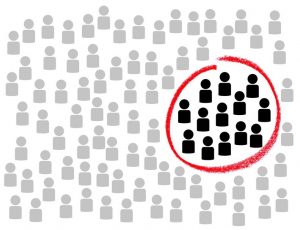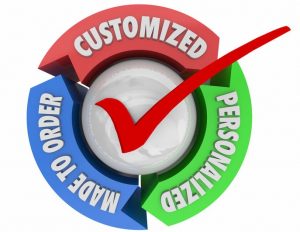Why do we buy what we buy?
 What’s your rationale when buying insurance? Do you want the cheapest provider? Do you worry about all the T&Cs? Perhaps you want to work with a broker who will get it right the first time, so you don’t have to do an overhaul every year.
What’s your rationale when buying insurance? Do you want the cheapest provider? Do you worry about all the T&Cs? Perhaps you want to work with a broker who will get it right the first time, so you don’t have to do an overhaul every year.
As you can see, behind any purchase there are many potential customer motivations and requirements. Businesses cannot pinpoint these from looking at their transactional, demographic, lifestyle or behavioral data alone. Instead it’s important to ask “why?”, and this is done most effectively through research.
When targeting new prospects, businesses often shape their product and offering to a specific audience, and because they have to rely on known data points this rarely includes personality types. For example, life insurance is usually targeted at people with children – however, each of those prospects will have a different reason to buy. Life insurance providers cannot know for sure all the reasons and it is rare to ask the customer upfront.
So how do we send the right message to prospective customers?
Using our attitudinal modelling service and working with our data partners, the Fusion Analytics team can model consumer attitudes from research data on to UK prospect data. This enables us to:
- tap into 50m+ UK consumers
- target a key audience with the highest propensity to buy and, then
- enable our client to send the right messaging to aid a sales conversion.
The propensity to buy and personality types can then be selected across a wide range of online and offline channels. These enable a business to create multi-channel targeting campaigns with consistent and targeted messaging.
I n a recent project with an insurance agent we’ve observed these great results:
n a recent project with an insurance agent we’ve observed these great results:
- 7 personality types were defined, with 3 being identified as key. These represented 18% of the market but 50% of all customers; i.e. customers were almost 3 times more likely to be a specific personality.
- The existing performance of 2 of the segments was less than the “core” segment. Adopting the right messaging to achieve the same performance in these segments would lead to a 15% increase in orders
- A 15% increase in performance allowed us to activate less responsive segments. This provided an additional 10% of orders within the same period
How does it work?
1. Agree personality types and ‘golden’ questions for a targeted survey
In this example, the personality types had already been defined and were being used within the organisation. If this hadn’t already been done, it can be achieved through an initial research project.
Using the existing rules, we decided on a reduced question set and measured the accuracy to ensure everything was robust.
The questions were then asked to a matched audience that we had over 400 demographic, lifestyle, affluence and other survey data points on.
2. Modelling and segment allocation
 We have used a number of approaches in the past to replicate segments across different databases.
We have used a number of approaches in the past to replicate segments across different databases.
In the insurance example, we used the survey results to build a model for each segment. The models identified the top 20 variables and core attributes of that segment. It found that specific combinations of; age, gender, region, and affluence were defined in the segment.
Once the models were built for each segment, each person had a score for each segment. Of course the further challenge was, if someone scored highly in more than 1 segment; where should they go?
Our allocation process subsequently followed these steps:
- Review the number of overlapping cases
- Create an allocation process to assign people to a segment
- Weight the allocation based on the known universe sizes (ie referencing back to the original research)
- Compare the final profile with the first profile
3. Testing and campaign planning
 Once the segment was built it was available on all prospect data. Historical campaign performance could then be reviewed to identify the opportunity.
Once the segment was built it was available on all prospect data. Historical campaign performance could then be reviewed to identify the opportunity.
The overlap of segments, channel data and audience or propensity to buy models could then be used in campaign planning and execution.
Can we help?
If you need help targeting and personalising messaging to consumers based on their personality types, please do get in touch with our team of specialists.
